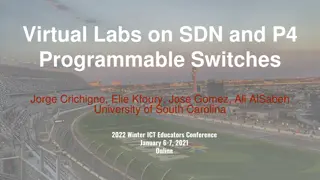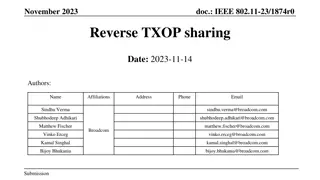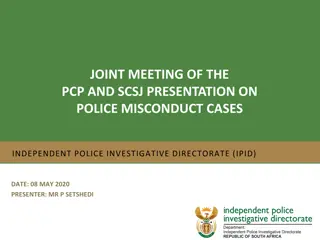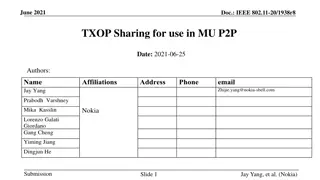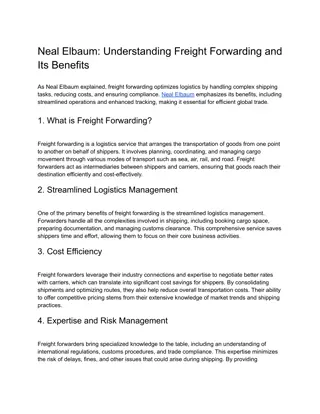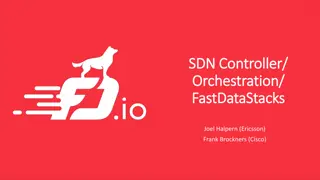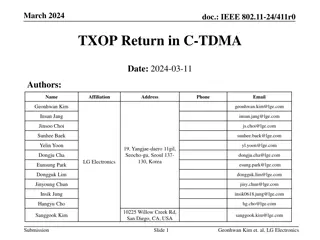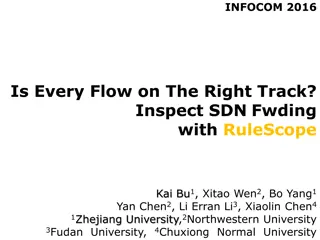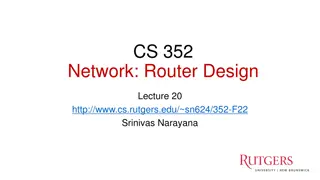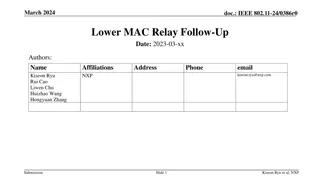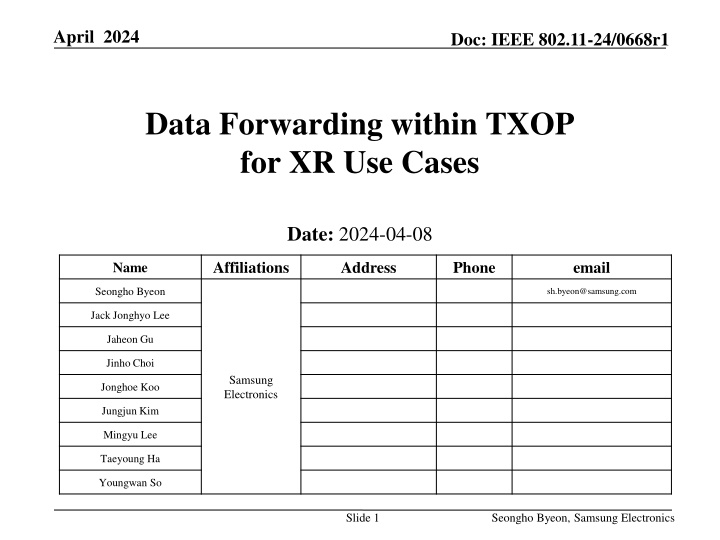
Data Forwarding for XR Use Cases in IEEE 802.11-24 Standard
Explore the need for low latency support in emerging XR use cases within the IEEE 802.11-24 standard, focusing on data forwarding mechanisms and quality of service setup between devices to enhance the end-to-end user experience.
Download Presentation

Please find below an Image/Link to download the presentation.
The content on the website is provided AS IS for your information and personal use only. It may not be sold, licensed, or shared on other websites without obtaining consent from the author. If you encounter any issues during the download, it is possible that the publisher has removed the file from their server.
You are allowed to download the files provided on this website for personal or commercial use, subject to the condition that they are used lawfully. All files are the property of their respective owners.
The content on the website is provided AS IS for your information and personal use only. It may not be sold, licensed, or shared on other websites without obtaining consent from the author.
E N D
Presentation Transcript
April 2024 Doc: IEEE 802.11-24/0668r1 Data Forwarding within TXOP for XR Use Cases Date: 2024-04-08 Affiliations Address Phone email Name Seongho Byeon sh.byeon@samsung.com Jack Jonghyo Lee Jaheon Gu Jinho Choi Samsung Electronics Jonghoe Koo Jungjun Kim Mingyu Lee Taeyoung Ha Youngwan So Slide 1 Seongho Byeon, Samsung Electronics
April 2024 Doc: IEEE 802.11-24/0668r1 Introduction Emerging XR use-cases Need to support low End-to-End (E2E) latency Encompassing the case where the two devices (i.e., remote device like VR glass or XR headset, and device for computation offloading such as laptop or smartphone) are connected through the same AP XR compute offloading over wireless links is a key capability to scale the adoption of XR devices [1] AP STA B STA A In such two-hop topology, sensing data or render data flows between two STAs via AP, requiring minimal control and contention overhead STA A and STB B may not hear each other Slide 2 Seongho Byeon, Samsung Electronics
April 2024 Doc: IEEE 802.11-24/0668r1 Introduction Low E2E Latency Support for XR use-cases Additional QoS setup b/w two devices for lower latency support using stream classification service (SCS) in TGbn [2-4] Introducing a new concept of procedure to set up the QoS, proxy SCS, between two devices within BSS, to enable the AP to deliver the proper E2E QoS for the traffic between STA A and STA B via the AP As data is exchanged between the remote computer device and XR device through AP, both Wi-Fi links have great impact on the overall XR user experience In this contribution, we would like to discuss the way of effectively supporting data forwarding established between the two UHR STAs through proxy SCS or other QoS providing methods within a TXOP Slide 3 Seongho Byeon, Samsung Electronics
April 2024 Doc: IEEE 802.11-24/0668r1 Introduction Various cases where data forwarding is actually needed in the local network When home cloud server or storage like NAS is running in LAN, various types of data forwarding may be required between multiple computing devices and monitor devices Slide 4 Seongho Byeon, Samsung Electronics
April 2024 Doc: IEEE 802.11-24/0668r1 Problem Statement No existing direct data forwarding mechanism Legacy EDCA operation for the case: 1) STA A(B) wins contention of the medium and sends UL data 2) AP receives the data and keeps it in its transmit queue under the same QoS level 3) AP wins contention, and sends the data to STA B(A) The time overhead required for transmission and reception is large, and the latency depends on the AP s queue status Trigger-based operation: 1) AP initiates a TXOP and sends Trigger frame to STA A(B) 2) STA A(B) transmits the data to AP, that needs to be forwarded to STA B(A) 3) AP then sends the data to STA B(A) AP acquires the TXOP for data forwarding on behalf of STAs, and the potential latency depends on the AP's scheduling policy Slide 5 Seongho Byeon, Samsung Electronics
April 2024 Doc: IEEE 802.11-24/0668r1 Recap TXOP optimization proposal [1] TXOP optimization method is proposed to improve overall QoS by reducing E2E latency, allowing any STA to share TXOP with minimal overhead for forwarding traffic to fit in TXOP TXOP sharing for forwarding to reduce contention latency for TXOP responder for co- related flow Thoughts for going further There is a need for a new protocol to ensure or guarantee that an associated AP transmits the data requiring forwarding within a shared TXOP It is necessary to quickly retrieve the shared TXOP after data forwarding so that the TXOP initiator can continue with the next data forwarding Slide 6 Seongho Byeon, Samsung Electronics
April 2024 Doc: IEEE 802.11-24/0668r1 Data Forwarding within TXOP Data forwarding (DF) supporting E2E QoS Assumptions A1. STA A and STA B are associated within the same BSS or the same multi-BSS A2. STA A and STA B may not hear each other Upon completing the forwarding of QoS Data (including retransmission) within the TXOP, the TXOP is handed over back to STA B, automatically [NOTE] The specific type of control frames are TBD TXOP initiator informs other STAs that it finishes TXOP, if the remaining TXOP is not sufficient for the next QoS data transmission and forwarding or no more data to be forwarded DF-ICR DF-End DF-End QoS data A-MPDU 1 BA AP SIFS BA BA STB A SIFS SIFS SIFS DF-ICF DF-Fin QoS data A-MPDU 1 QoS data A-MPDU 2 STA B SIFS SIFS SIFS SIFS SIFS Since the time required for data forwarding cannot be accurately predicted, the TXOP might be set as long as possible within the range allowed by the AP (TBD) TXOP Example: STA B initiates TXOP and transfers frame(s) to STA A via the AP Slide 7 Seongho Byeon, Samsung Electronics
April 2024 Doc: IEEE 802.11-24/0668r1 Conclusion In this presentation, we propose a straightforward enhancement to the baseline TXOP sharing mechanism in order to facilitate two-hop data forwarding This allows the AP to provide proper E2E QoS for low latency traffic between two STAs for emerging XR use-cases in the local network The proposed data forwarding mechanism can be adopted to various local network senarios Slide 8 Seongho Byeon, Samsung Electronics
April 2024 Doc: IEEE 802.11-24/0668r1 References [1] 11-23/1387r1 TXOP sharing extensions for XR use-cases (Dibakar Das, Intel) [2] 11-23/0073r0 Thoughts on Proxy SCS (Guagang Huang, Huawei) [3] 11-23/1958r0 Proxy QoS management for XR use cases (Guoqing Li, Meta) [4] 01-24/1885r1 End-to-end QoS with SCS (Duncan Ho, Qualcomm) Slide 9 Seongho Byeon, Samsung Electronics

